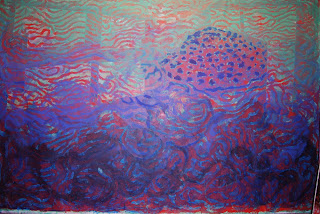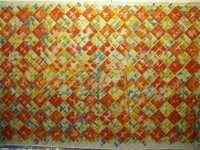Thursday, December 31, 2009
CV
Lubos Janota
Born 1946
Address:
Finska gatan 33
SE-122 37 Enskede
Sweden
Tel. 0046-(0)8-6483649
Education
Konstfackskolan, student examination, Brno, Czech Republic 1964-68
Konstfack, Stockholm , Sweden 1969-73
Kungliga Konsthögskolan, Stockholm 1973-79
Chinese calligraphy, for Dr Tien Lung,
Östasiatiska museet, Stockholm, 1977-78
Separate exhibitionsKonstfack, Stockholm , Sweden 1973
Gallery Ebert, Konstanz, Germany 1975
Gallery Mauritz, Germany 1976
Gallery Misuna, Stockholm, 1979
Gallery “13”, Oslo, Norway 1980
Galleri Mejan, Stockholm 1981
S-E Banken, Stockholm 1979, 1980, 1982
Wadköpingshallen, Örebro, Sweden 1983
Norrtälje Konsthall, Sweden 1984
Arvika Konsthall, Sweden 1984
Sveagalleriet, Stockholm 1985, 1988
Gallery Kram, Halmstad, Sweden 1990
Grafiska Sällskapet, Stockholm 1992
Konstnärshuset, Stora Galleriet, Stockholm 1994
Gallery Bratri, Capku, Prague, Czech Republic 1994
Gallery Malovany Dum, Trebic, Czech Republic 1994
Gallery Flamingo, Falkenberg, Sweden 1996
Grafiska Sällskapet, Stockholm 1999
Tjeckiska Kulturcentret, Stockholm 2006
Participation in group exhibitions, etc.Nordic Workshop, experimental grafic art,
Jyväskylä, Finland 1986
Grafic Art Triannual, Liljevalchs, Stockholm 1992
International symposium in monumental painting
(5 m x 3,60 m), Valtice, Czech Republic 1994
“Exil”- exhibition, with 60 artists with
Czech origin living abroad, Gallery Klatovy,
Czech Republic 1994
Triannual in Zlin, Czech Republic 1996
Lithography – International symposium, Tidaholm,
Sweden 1996
Painting – International symposium, Klatovy,
Czech Republic 1996
Gallery Klatovy, Czech Republic 1996
Grafic Art Triannual, Stockholm 2002
“En Var” Kulturhuset, Stockholm 2005, 2006
Public art worksEnskedefältets skola, Stockholm 1997
Nacka Hospital, Stockholm 1982
SAP headquarters, Stockholm 1991
Grants and contributions for projects
Grants and contributions for projects 1987, 1990, 1992-93
Grafiska Sällskapets stipendium/ grant 1992
Konstnärshusets stipendium/ grant 1994
Grafikens Hus stipendium/ grant 2000
Konstärsnämnden, Sweden, work grant 2006-07
ReviewsNorrtälje konsthall, Sweden– Inger Malm 1984
Sveagalleriet, Stockholm 1985
Dagens Nyheter – Arne Törnqvist 1985
Svenska Dagbladet – Stig Johansson 1985
Dagens Nyheter – Lars O Ericsson 1988
Svenska Dagbladet – Stig Johansson 1988
Norrtälje Tidning – Ann Ljunggren-Jansson 1988
Hallands-Posten – Rune Gunnarsson 1990
Catalogue ”Exil” 1994
”Atelier”, periodical for art, review and interview
- H Honcopola 1994
Revue “K”, Paris, painting – Jiri Kolar 1995
Hallands Nyheter – Lotta Bergström 1996
CataloguesL’Art d’Aujourdhui en Tschechoslovaquie 1979
Seda Cihla “Exil”, Czech Republic 1994
Revue “K”, Paris, – Jiri Kolar 1995
Zlinsky Salon, Czech Republic 1996
Catalogue Klatovy, Czech Republic 1996
Ny svensk grafik, Grafiska Sällskapet, Sweden 1996
Lubos Janota
Born 1946
Address:
Finska gatan 33
SE-122 37 Enskede
Sweden
Tel. 0046-(0)8-6483649
Education
Konstfackskolan, student examination, Brno, Czech Republic 1964-68
Konstfack, Stockholm , Sweden 1969-73
Kungliga Konsthögskolan, Stockholm 1973-79
Chinese calligraphy, for Dr Tien Lung,
Östasiatiska museet, Stockholm, 1977-78
Separate exhibitionsKonstfack, Stockholm , Sweden 1973
Gallery Ebert, Konstanz, Germany 1975
Gallery Mauritz, Germany 1976
Gallery Misuna, Stockholm, 1979
Gallery “13”, Oslo, Norway 1980
Galleri Mejan, Stockholm 1981
S-E Banken, Stockholm 1979, 1980, 1982
Wadköpingshallen, Örebro, Sweden 1983
Norrtälje Konsthall, Sweden 1984
Arvika Konsthall, Sweden 1984
Sveagalleriet, Stockholm 1985, 1988
Gallery Kram, Halmstad, Sweden 1990
Grafiska Sällskapet, Stockholm 1992
Konstnärshuset, Stora Galleriet, Stockholm 1994
Gallery Bratri, Capku, Prague, Czech Republic 1994
Gallery Malovany Dum, Trebic, Czech Republic 1994
Gallery Flamingo, Falkenberg, Sweden 1996
Grafiska Sällskapet, Stockholm 1999
Tjeckiska Kulturcentret, Stockholm 2006
Participation in group exhibitions, etc.Nordic Workshop, experimental grafic art,
Jyväskylä, Finland 1986
Grafic Art Triannual, Liljevalchs, Stockholm 1992
International symposium in monumental painting
(5 m x 3,60 m), Valtice, Czech Republic 1994
“Exil”- exhibition, with 60 artists with
Czech origin living abroad, Gallery Klatovy,
Czech Republic 1994
Triannual in Zlin, Czech Republic 1996
Lithography – International symposium, Tidaholm,
Sweden 1996
Painting – International symposium, Klatovy,
Czech Republic 1996
Gallery Klatovy, Czech Republic 1996
Grafic Art Triannual, Stockholm 2002
“En Var” Kulturhuset, Stockholm 2005, 2006
Public art worksEnskedefältets skola, Stockholm 1997
Nacka Hospital, Stockholm 1982
SAP headquarters, Stockholm 1991
Grants and contributions for projects
Grants and contributions for projects 1987, 1990, 1992-93
Grafiska Sällskapets stipendium/ grant 1992
Konstnärshusets stipendium/ grant 1994
Grafikens Hus stipendium/ grant 2000
Konstärsnämnden, Sweden, work grant 2006-07
ReviewsNorrtälje konsthall, Sweden– Inger Malm 1984
Sveagalleriet, Stockholm 1985
Dagens Nyheter – Arne Törnqvist 1985
Svenska Dagbladet – Stig Johansson 1985
Dagens Nyheter – Lars O Ericsson 1988
Svenska Dagbladet – Stig Johansson 1988
Norrtälje Tidning – Ann Ljunggren-Jansson 1988
Hallands-Posten – Rune Gunnarsson 1990
Catalogue ”Exil” 1994
”Atelier”, periodical for art, review and interview
- H Honcopola 1994
Revue “K”, Paris, painting – Jiri Kolar 1995
Hallands Nyheter – Lotta Bergström 1996
CataloguesL’Art d’Aujourdhui en Tschechoslovaquie 1979
Seda Cihla “Exil”, Czech Republic 1994
Revue “K”, Paris, – Jiri Kolar 1995
Zlinsky Salon, Czech Republic 1996
Catalogue Klatovy, Czech Republic 1996
Ny svensk grafik, Grafiska Sällskapet, Sweden 1996
The Qing dynasty from Manchuria concurred China in 1644. At that time the painting of China had lost its creativity. With devoted reverence the painters were copying the Great Masters. Suddenly appeared “Friar Bitter Melon” or generally known as Shih-Tao. He revolutionised the Chinese painting in the 1700th century. Shih-Tao wrote a famous essay, which is a manifesto of individualism and expressionism. The name of the essay is “Friar Bitter Melon´s thoughts about Art." A founding idea of Shih-Tao is the concept “i-hua” which means “one stroke” or “one line”. It is not about painting a picture in one stroke but a structured view on reality and how painting should relate to it. Shih-Tao writes: “In the Dawn of Time there was no Method. The Original Chaos was not organised. When the Original Chaos was organised Method was born. Method was born from One Stroke. This One Stroke is the Origin of All That Is. The Gods use it and the humans should learn it.” The writer and sinologist Lin Yutang (“The Chinese Theory of Art” 1967) called Shih-Tao´s essay a complex, profound and revolutionary text. A hymn of individualism harmonising with the existence.
Lubos Janota is interested in the Chinese perspective. The physical act of painting is important. From his former football carrier Lubos brings physicality and rhythm into his painting - standing in front of a 3 x 3 meter canvas, concentrating and breathing in pace with the landscape and in one pliable rhythm following the logic of the vision. It is not about depicting but empathy.
Gregor Wroblewski, 2006
Lubos Janota is interested in the Chinese perspective. The physical act of painting is important. From his former football carrier Lubos brings physicality and rhythm into his painting - standing in front of a 3 x 3 meter canvas, concentrating and breathing in pace with the landscape and in one pliable rhythm following the logic of the vision. It is not about depicting but empathy.
Gregor Wroblewski, 2006






























 Painting, Serie 1, 200 x 300 cm
Painting, Serie 1, 200 x 300 cm
